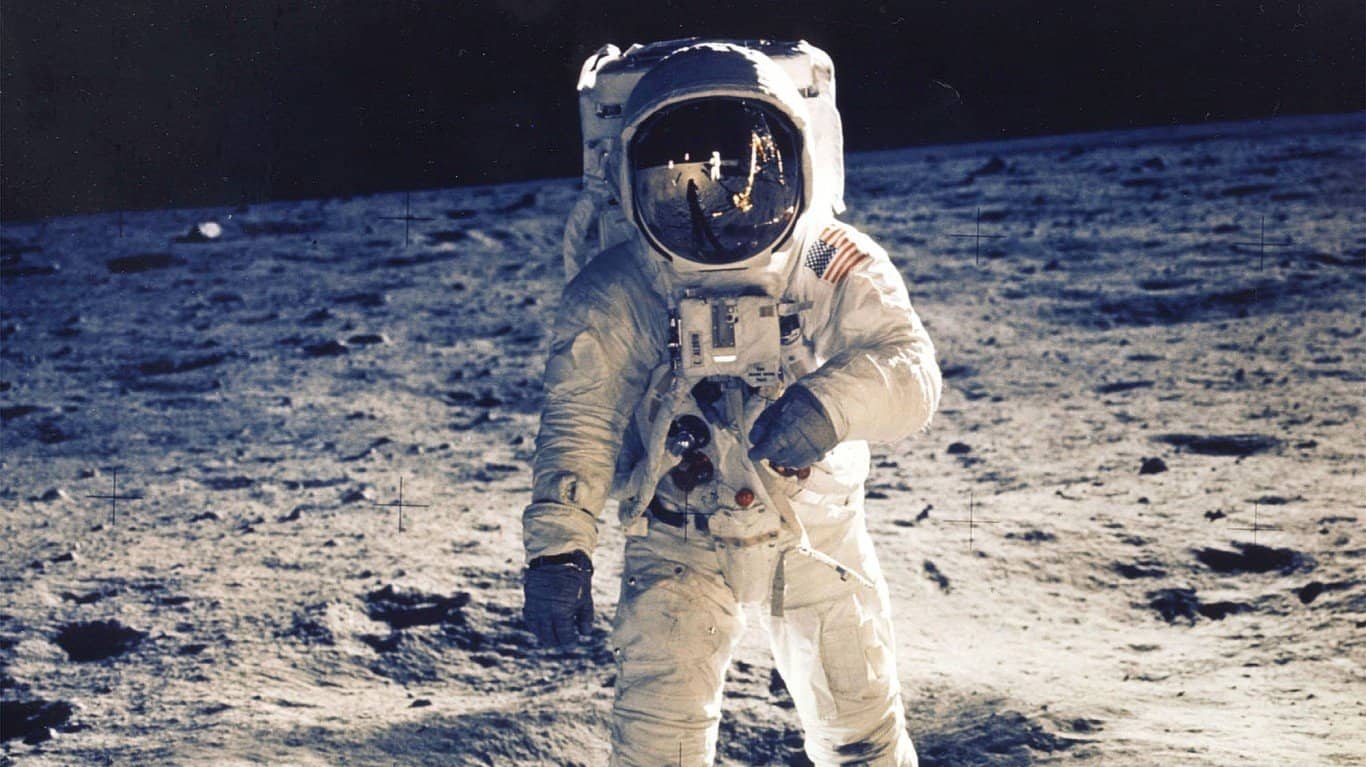NASA began cancelling future Apollo space flights a mere six months after Apollo 11 achieved the first successful landing of humans on the lunar surface on July 20, 1969. Originally, 20 missions were planned, but the agency determined that only five more would launch. The Apollo 17 splash-down on Dec. 19, 1972, then, marked the program’s end, and astronauts Eugene A. Cernan and Harrison H. Schmitt would be the last people to set foot on the moon’s surface for the foreseeable future. (NASA is planning to land four astronauts on the lunar surface in September 2026, pushed back a year from the original projected date.)
Meanwhile, this Feb. 22, a small unmanned robotic lander became the first American spacecraft to settle on the moon’s surface since that last Apollo mission. Called Odysseus, the lander was built by Houston-based Intuitive Machines, a self-described “end-to-end space exploration company.”
NASA used to build its own lunar landers. Instead, it now oversees a program called Commercial Lunar Payload Services, in which the agency works with a handful of American companies to develop vehicles that can perform the technological and scientific functions needed to prepare for the next manned flights. (These are 30 NASA inventions we still use today.)
Odysseus, which was sent into space on a SpaceX rocket, carried various recording and transmitting instruments, including a stereo camera and radio equipment. It also carried 125 inch-wide sculptures of the celestial body by artist Jeff Koons, which he describes as “the first authorized artwork on the moon” — a necessary provision because several earlier pieces of art had been deposited on the lunar surface unofficially by various astronauts. (The day after Odysseus landed, it toppled over, taking some of its antennas out of use; nonetheless, it is said to still be gathering and sending back useful data.)
To compile a list of astronauts who landed on the moon during the Apollo program and their mission objectives, 24/7 Tempo reviewed resource material including NASA’s Apollo Program page and Space.com. The Apollo 13 mission of April 1970 is not included because it was aborted in flight due to a failure of the oxygen system.
Six three-man crews went to the moon, and the two astronauts from each mission who actually walked on the moon’s surface belong to one of the world’s most exclusive clubs. They are all white American males, hailing from nine states. All had military backgrounds except geologist Harrison H. Schmitt (Apollo 17). Schmitt, Charles M. Duke Jr., David R. Scott, and Buzz Aldrin are the only moon-walkers still alive today — at the ages of 88, 88, 91, and 94, respectively. (The United States is the only country that has landed manned space flights on the moon.)
The objectives of the lunar missions extended far beyond just gathering moon rocks. Beginning with Apollo 15, lunar modules gave the astronauts mobility enabling them to drive as much as 18 miles from the landing site, and they performed lunar orbital experiments, probed the moon’s mass and gravitational variations, deployed solar wind composition and seismic instruments, and acted as surveyors, scouting out future landing spots. Their heroic efforts gave us immeasurably valuable scientific information about the moon and its relationship to earth.
Scroll down to read more about every time men have landed on the moon:
July 16-24, 1969: Apollo 11

- Astronauts: Neil Armstrong, Edwin E. Aldrin Jr., Michael Collins
Neil Armstrong, the first person to walk on the moon, became a licensed student pilot at 16, before he got his driver’s license. He and fellow Apollo 11 crew member Edwin “Buzz” Aldrin, the second person to walk on the moon, both served during the Korean War. Before Michael Collins piloted the command module during the Apollo 11 mission, he had become the third American to walk in space during the Gemini X mission in 1966.
1969: Apollo 11

- Mission goals: Explore the moon’s surface in the lunar module; gather rocks and other materials; set up television equipment to return signals back to earth; photograph lunar terrain; deploy solar wind composition and seismic experiments.
Nov. 14-24, 1969: Apollo 12
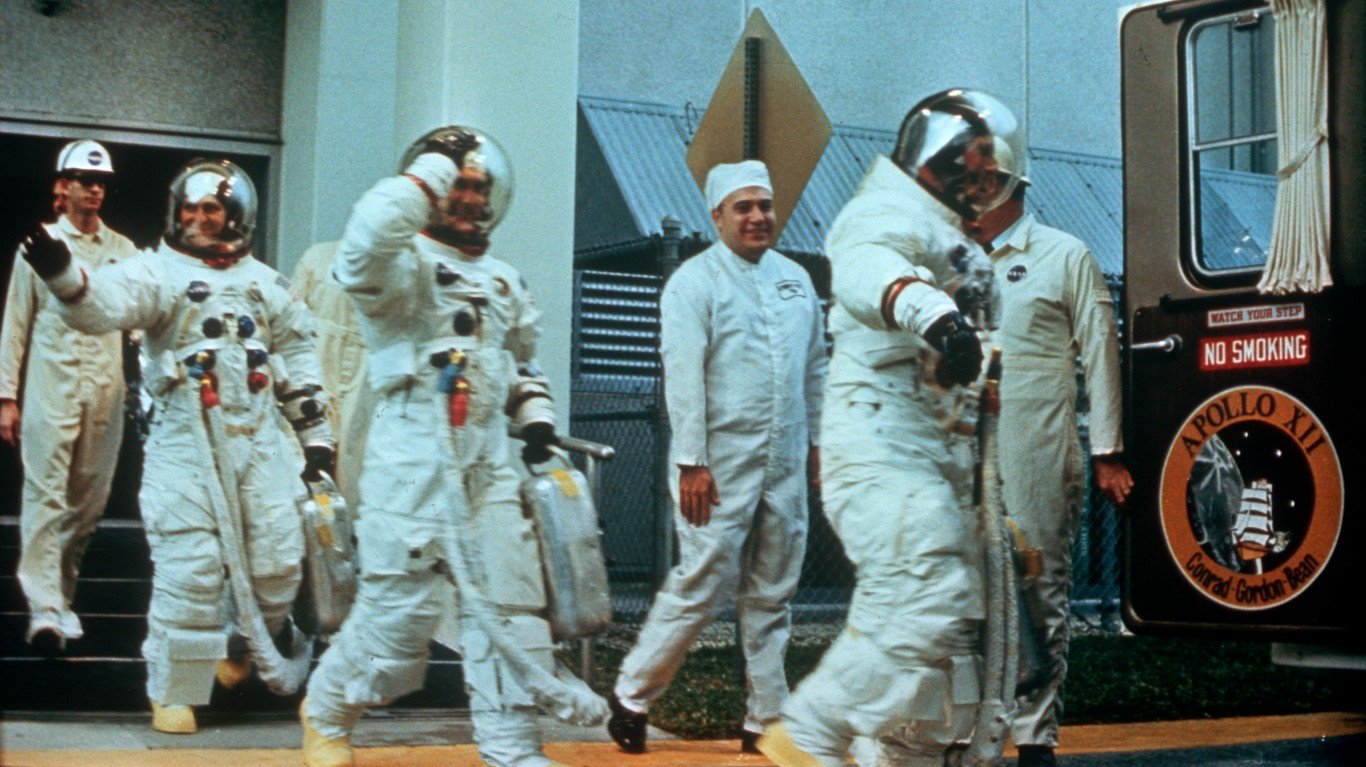
- Astronauts: Charles Conrad Jr., Alan L. Bean, Richard F. Gordon Jr.
The Apollo 12 mission reunited Charles Conrad and Richard Gordon. They had flown together on the Gemini 11 in 1966, a mission that set a then-record human space flight altitude of 853 miles. Conrad had flown into space twice before the Apollo 12 mission. The Apollo 12 space shot would be Alan Bean’s first space fight. He would later fly on Skylab 3. The Apollo 12 crew spent almost three times as long outside the lunar module than their Apollo 11 predecessors.
1969: Apollo 12
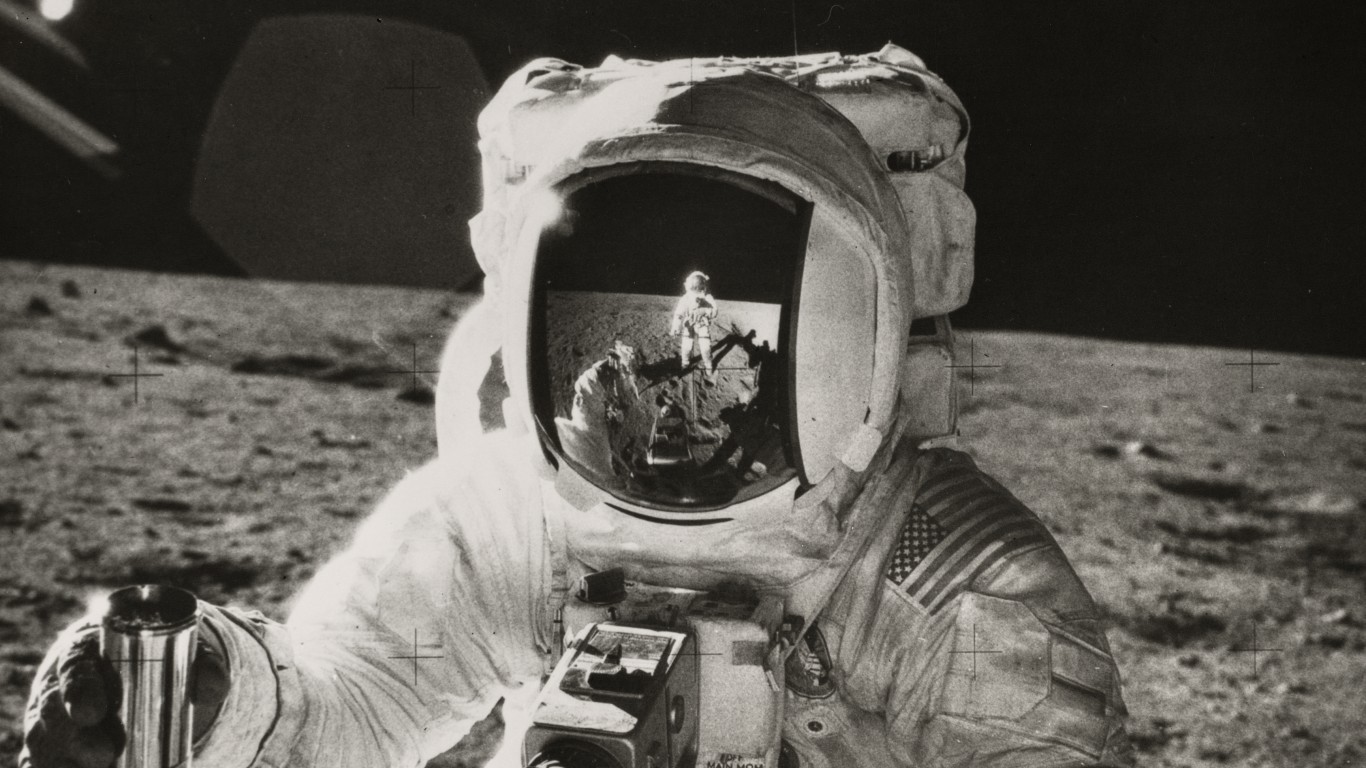
- Mission goals: Explore the lunar surface; set up seismic, scientific, and engineering experiments; size up possible landing areas for future missions; retrieve remains of the Surveyor III spacecraft that had landed on the moon on April 20, 1967.
Jan. 31-Feb. 9, 1971: Apollo 14
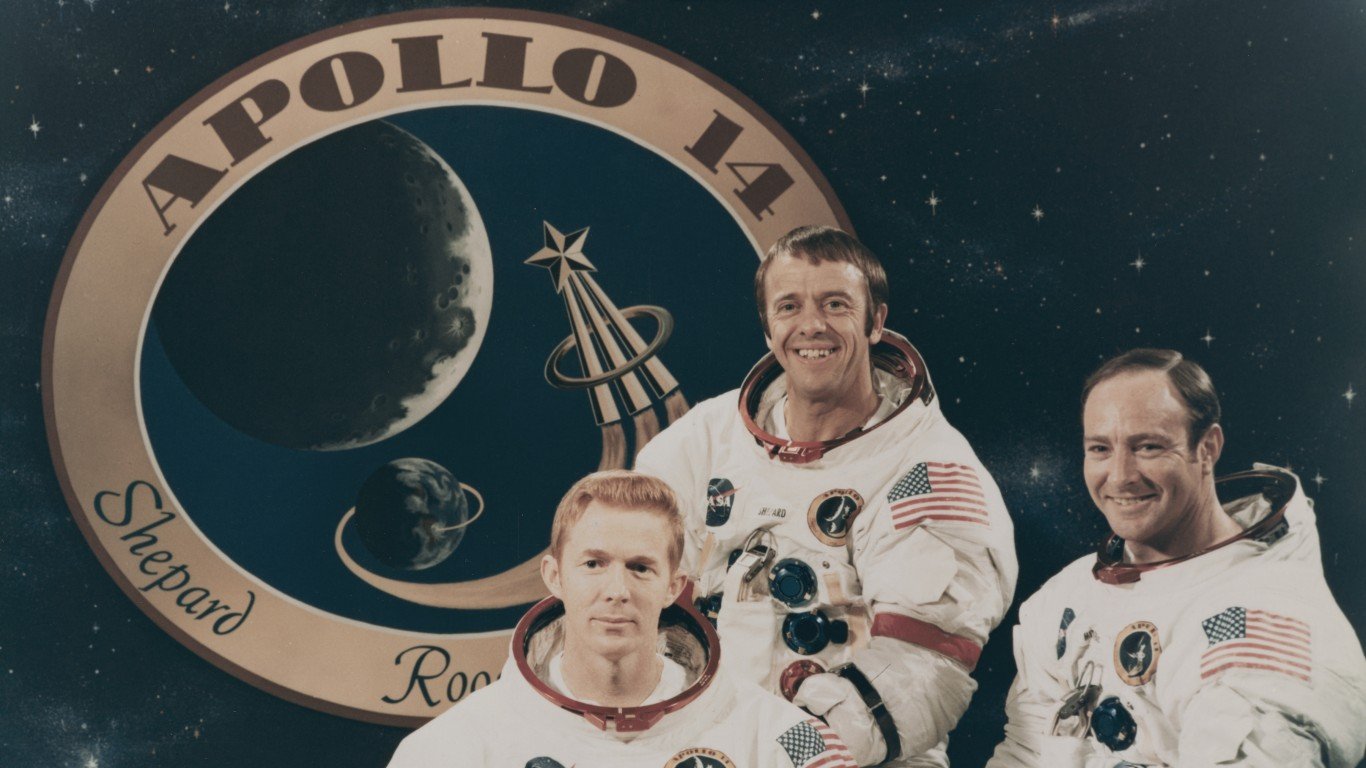
- Astronauts: Alan B. Shepard Jr., Edgar D. Mitchell, Stuart A. Roosa
The Apollo 14 mission marked Alan Shepard’s return to space after becoming the first American to leave the earth’s atmosphere 10 years earlier. Shepard set a distance record by walking more than 9,000 feet on the moon, pulling a cart of tools and collecting lunar samples. He and Edgar Mitchell spent a record 33 hours and 31 minutes on the lunar surface and collected 94 pounds of material. Stuart Roosa, the pilot on the mission, would later lead NASA’s space shuttle program.
1971: Apollo 14

- Mission goals: Explore the Fra Mauro region of the moon; deploy lunar surface scientific experiments; conduct geologic investigations; photograph potential future landing sites and deep-space phenomena, such as zodiacal light.
July 26-Aug. 7, 1971: Apollo 15

- Astronauts: David R. Scott, James B. Irwin, Alfred M. Worden
David Scott had already flown on the Gemini 8 and Apollo 9 space shots before Apollo 15. Scott accumulated more than 546 hours in space during his astronaut career. He and James Irwin spent almost three days on the lunar surface, exploring the Hadley Rille and Apennine Mountains regions. They drove their Lunar Rover 1, the first lunar roving vehicle, 18 miles, the longest distance traveled on the moon, and collected 180 pounds of lunar samples. During the return flight to earth, pilot Alfred Worden took a space walk. He was deeply moved by his experiences and published a book of poetry about them in 1974.
1971: Apollo 15
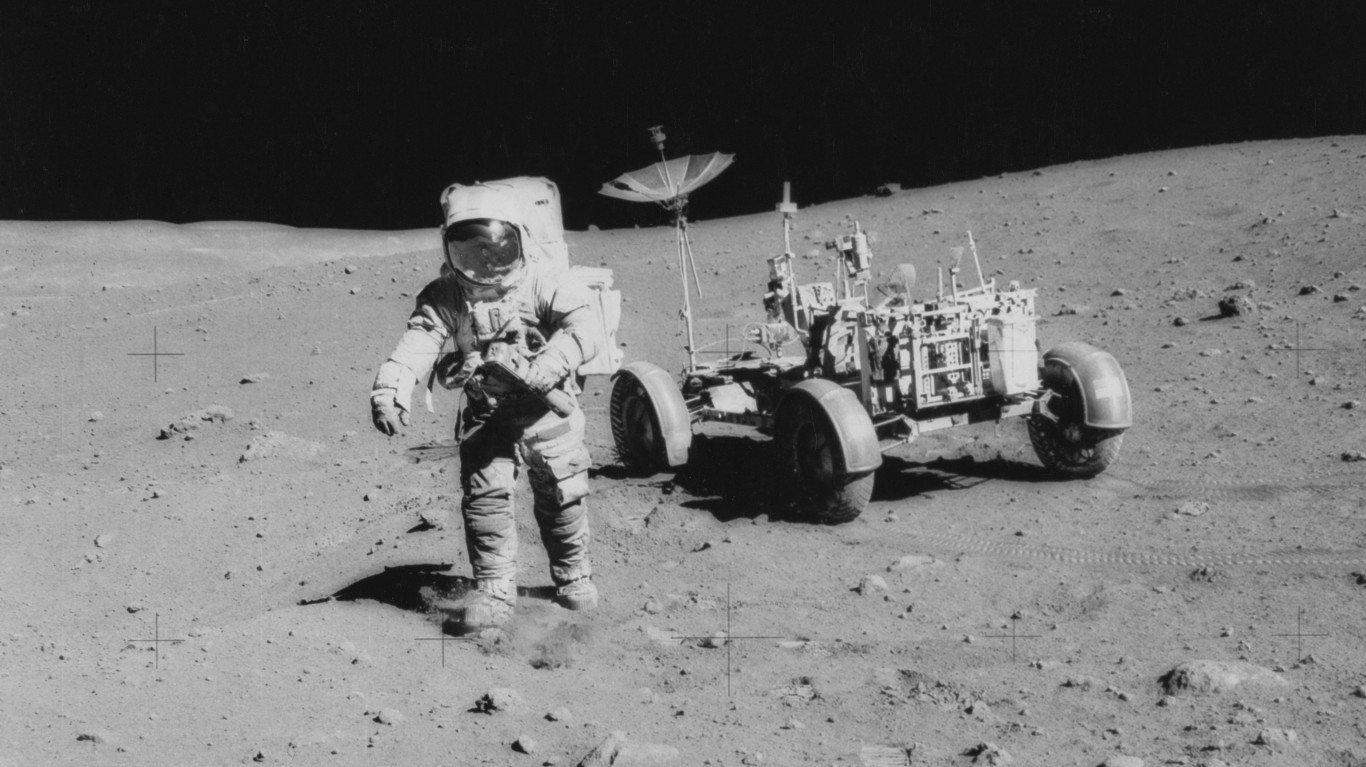
- Mission goals: Explore the Hadley-Apennine area; activate lunar surface scientific experiments; perform lunar orbital experiments and various photographic tasks; launch a subsatellite into lunar orbit designed to investigate the moon’s mass and gravitational variations.
April 16-27, 1972: Apollo 16
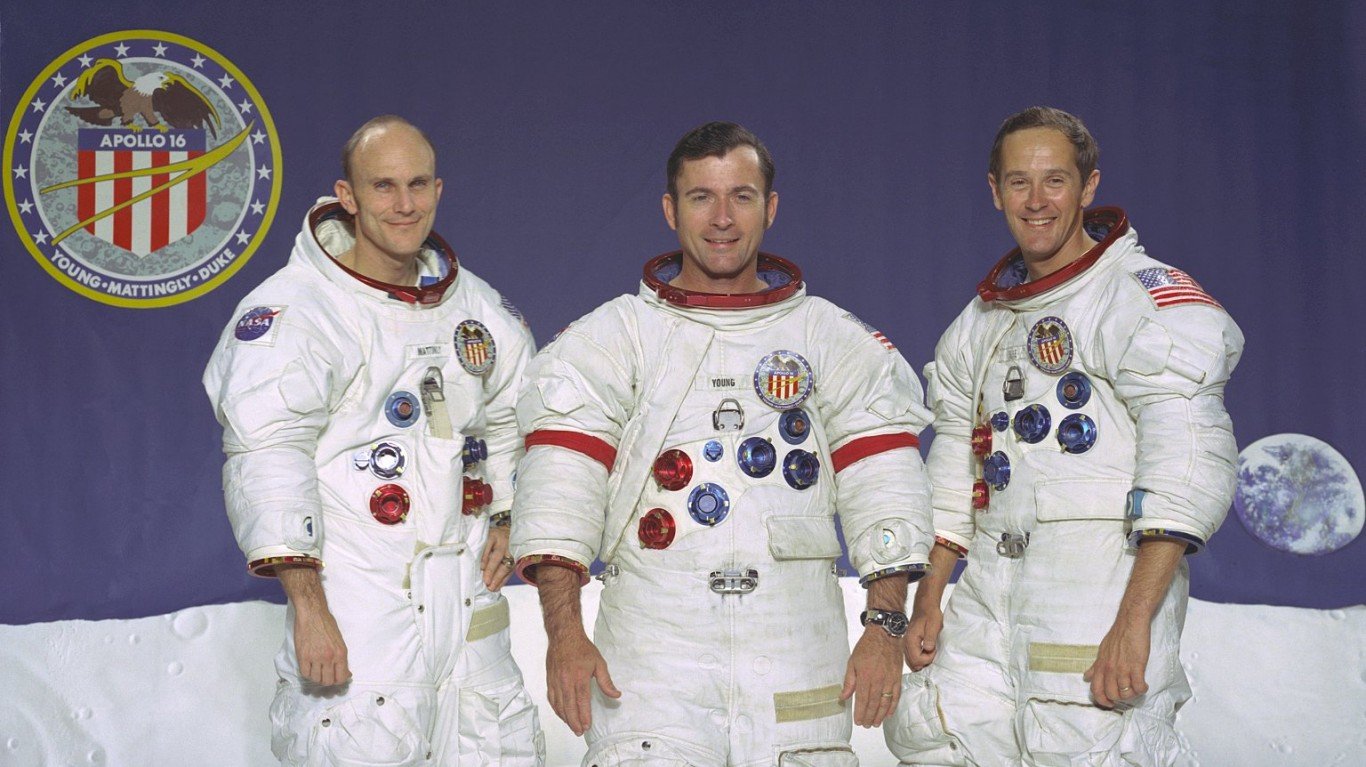
- Astronauts: John W. Young, Charles M. Duke Jr., Thomas K. Mattingly II
John Young was the first American astronaut to make six space flights. He participated in both the Gemini and Apollo programs. He was the copilot with Virgil Grissom on Gemini 3, the first U.S. two-man spaceflight, in 1965. Young and Charles Duke were on the moon for 71 hours and spent 21 hours in extravehicular activities, gathering 211 pounds of lunar materials. After retiring from NASA, Duke became an entrepreneur, minister, and author, publishing his autobiography, “Moonwalk,” in 1990. Thomas “Ken” Mattingly was set to be the pilot for the aborted Apollo 13, but was removed 72 hours before launch because he’d been exposed to German measles. He got into space as the pilot of Apollo 16. He would later be commander for the last orbital test flight of the Space Shuttle Columbia in 1982, and the commander of the Discovery three years later.
1972: Apollo 16
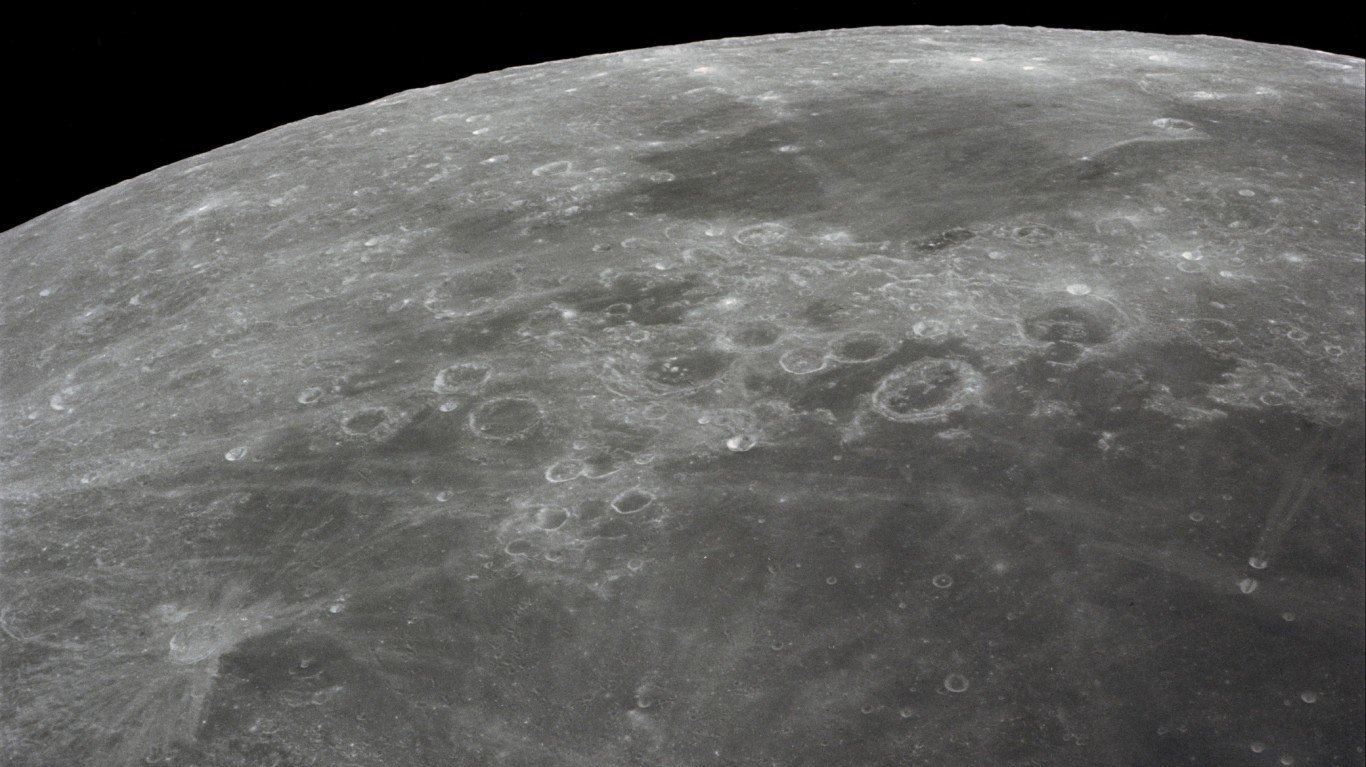
- Mission goals: Sample materials at the unexplored Descartes region; activate surface experiments; conduct in-flight experiments and photographic tasks from lunar orbit; perform experiments involving zero gravity.
Dec. 7-19, 1972: Apollo 17
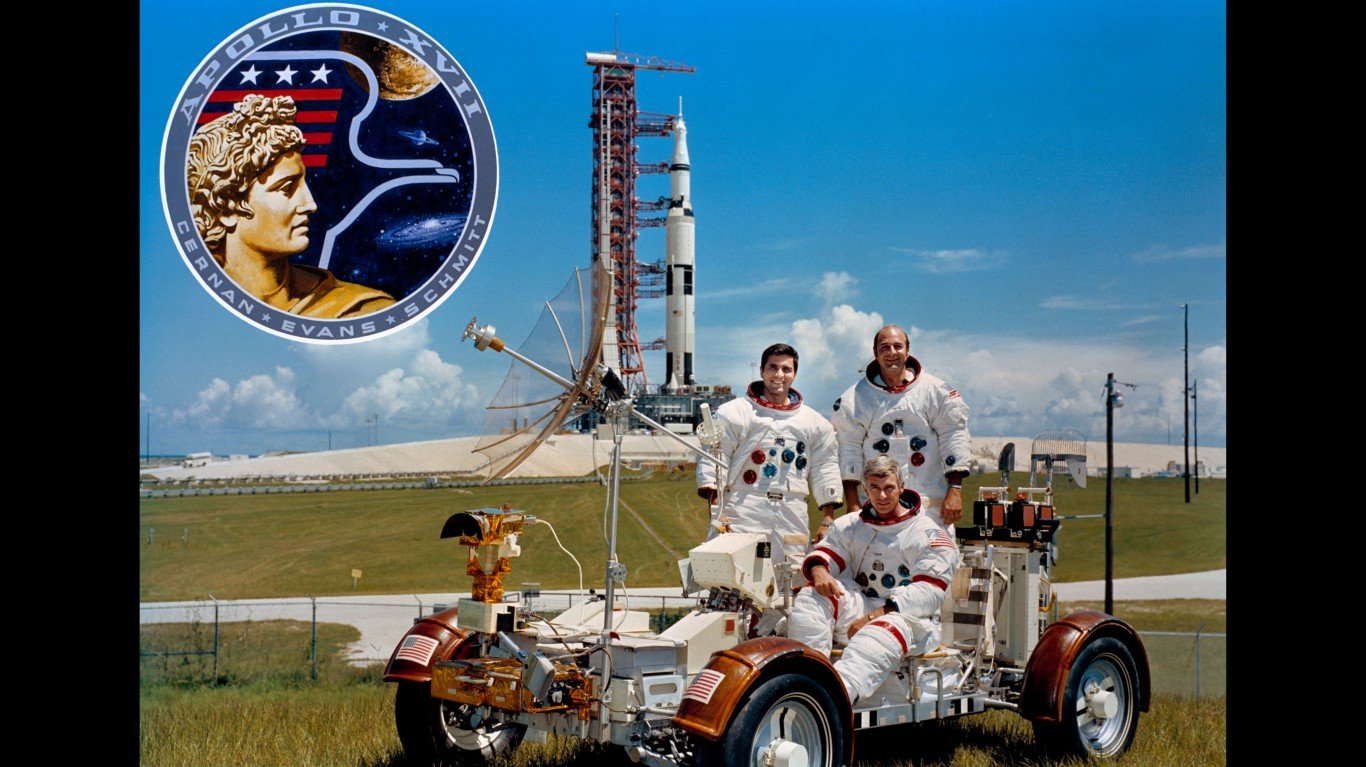
- Astronauts: Eugene A. Cernan, Harrison H. Schmitt, Ronald E. Evans
Eugene A. Cernan and Harrison H. Schmitt were the last people to leave their footprints on the moon. Cernan had flown in two prior space flights. He was the second American to walk in space during the Gemini 9 flight in 1966 and he was the pilot of the Apollo 10 mission, the last space shot before the historic moon landing by Apollo 11. Schmitt, a geologist, was the only astronaut to have walked on the moon without a military background. He later became a U.S. senator from New Mexico and wrote the book “Return to the Moon: Exploration, Enterprise, and Energy in the Human Settlement of Space.” Command module pilot Ronald E. Evans walked in space for an hour and six minutes during the return flight to Earth.
Apollo 17 established the following records in lunar exploration: longest manned lunar landing flight (301 hours and 51 minutes); longest lunar surface extravehicular activities (22 hours and four minutes); and largest lunar sample return (an estimated 249 pounds).
1972: Apollo 17
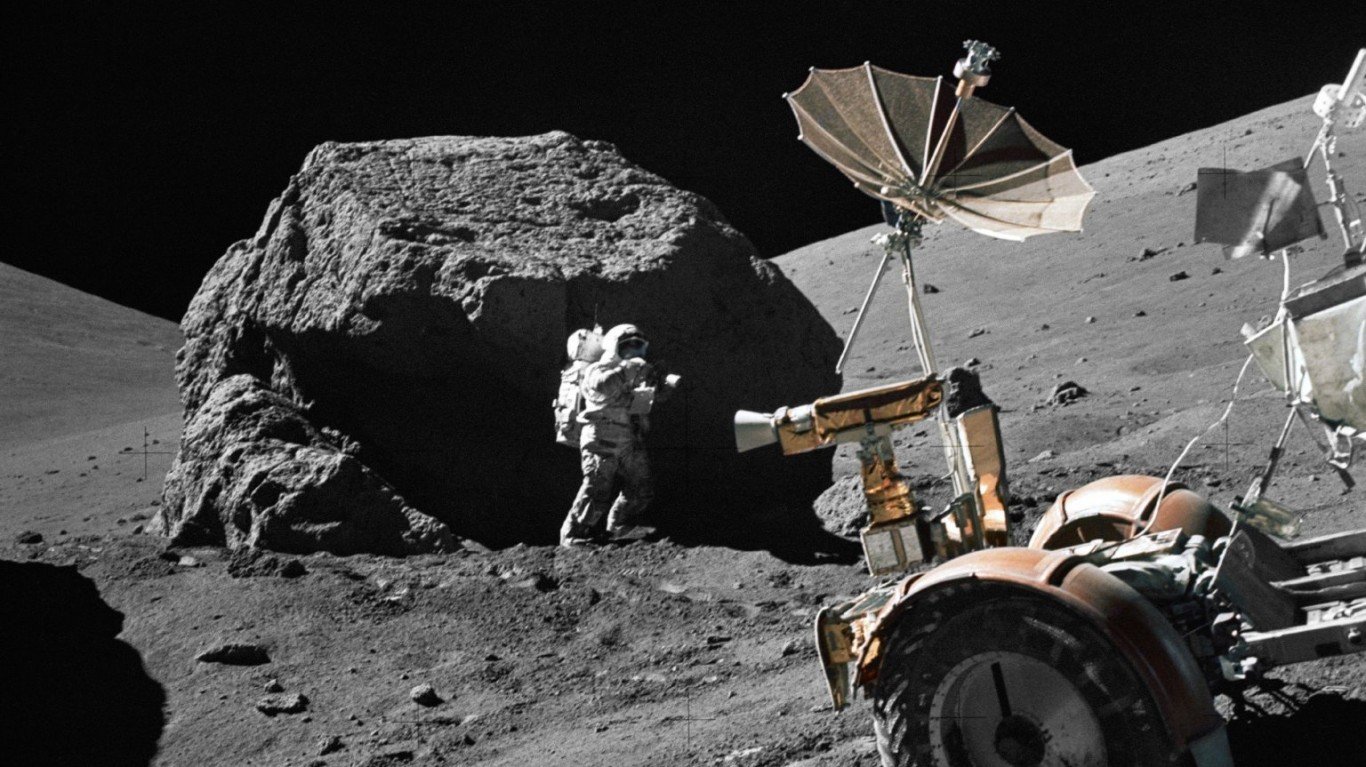
- Mission goals: Conduct geological surveying and material sampling in the Taurus-Littrow area; build on previous scientific experiments and conduct heat-flow and biomedical tests.
Sponsored: Want to Retire Early? Here’s a Great First Step
Want retirement to come a few years earlier than you’d planned? Or are you ready to retire now, but want an extra set of eyes on your finances?
Now you can speak with up to 3 financial experts in your area for FREE. By simply clicking here you can begin to match with financial professionals who can help you build your plan to retire early. And the best part? The first conversation with them is free.
Click here to match with up to 3 financial pros who would be excited to help you make financial decisions.
